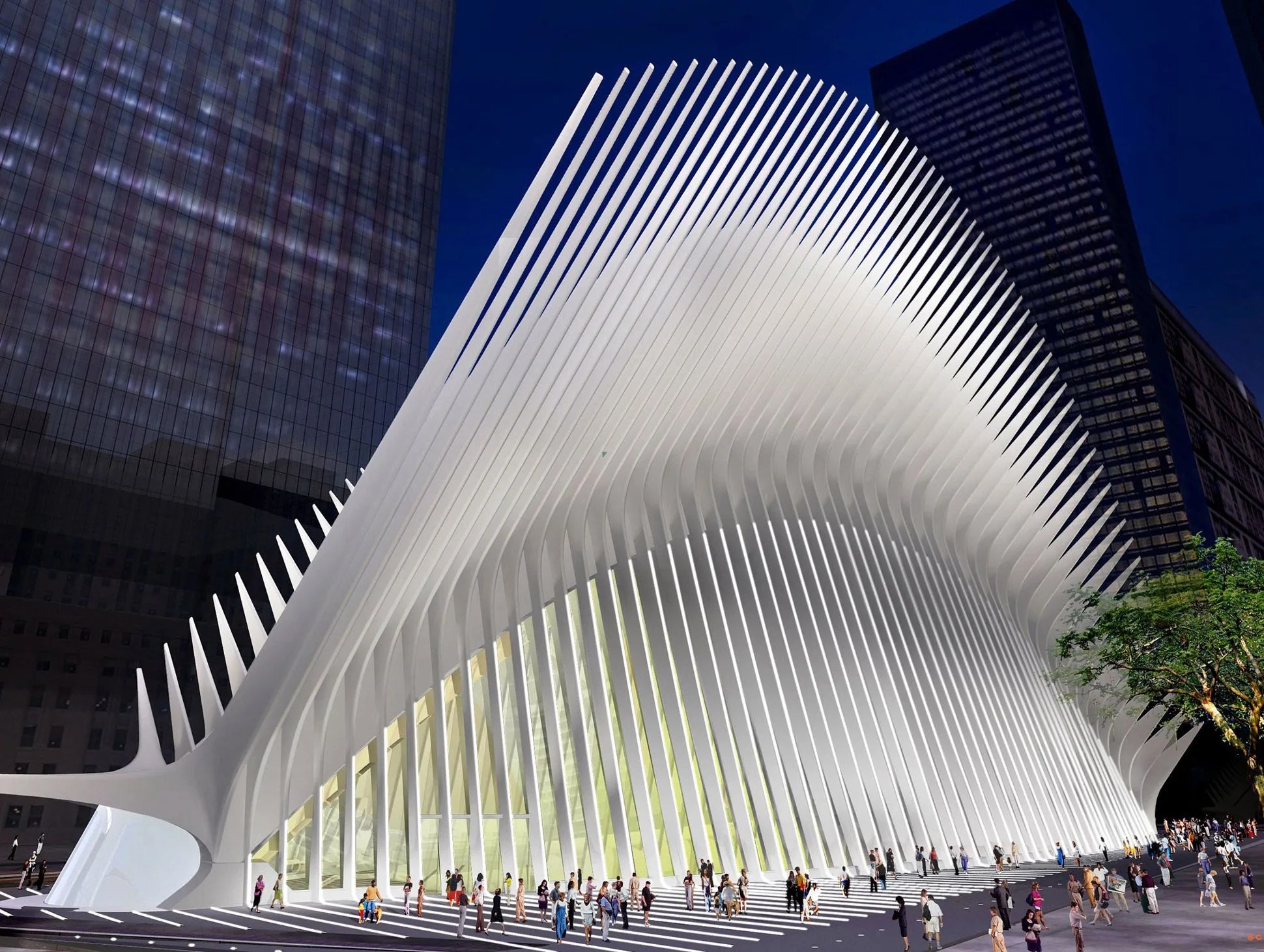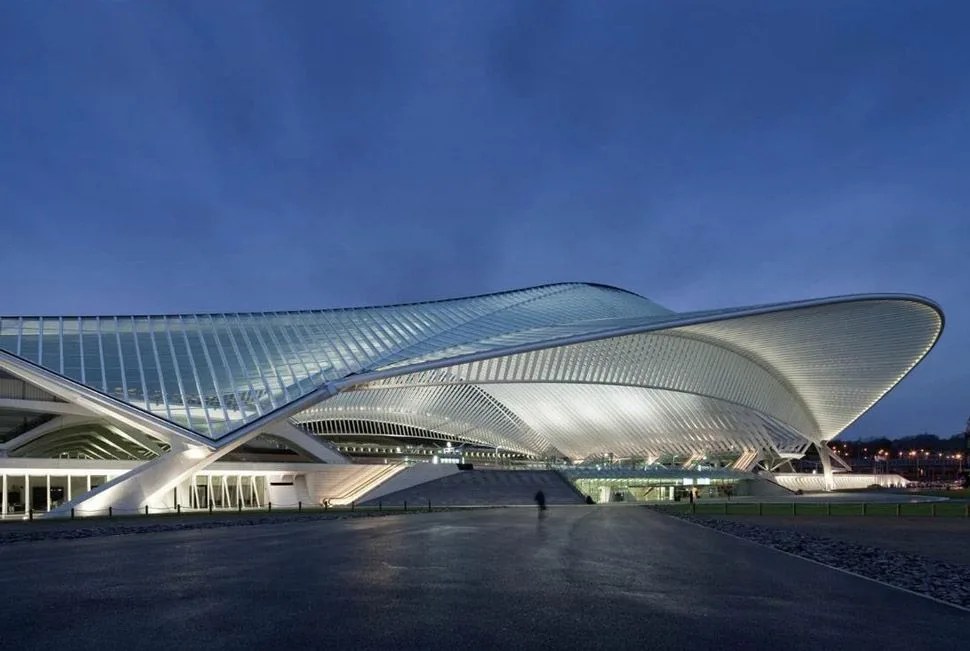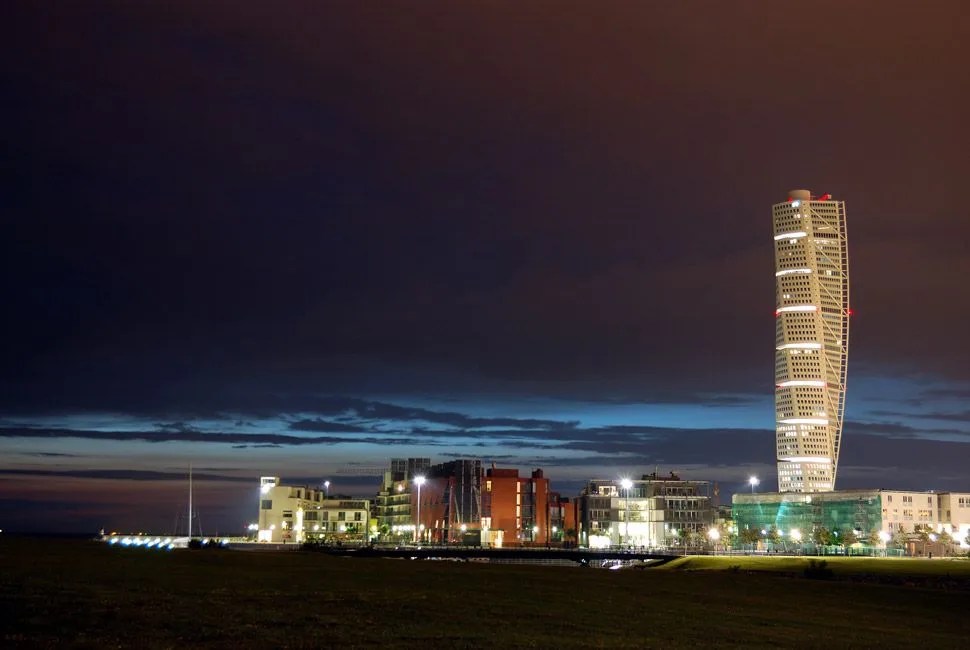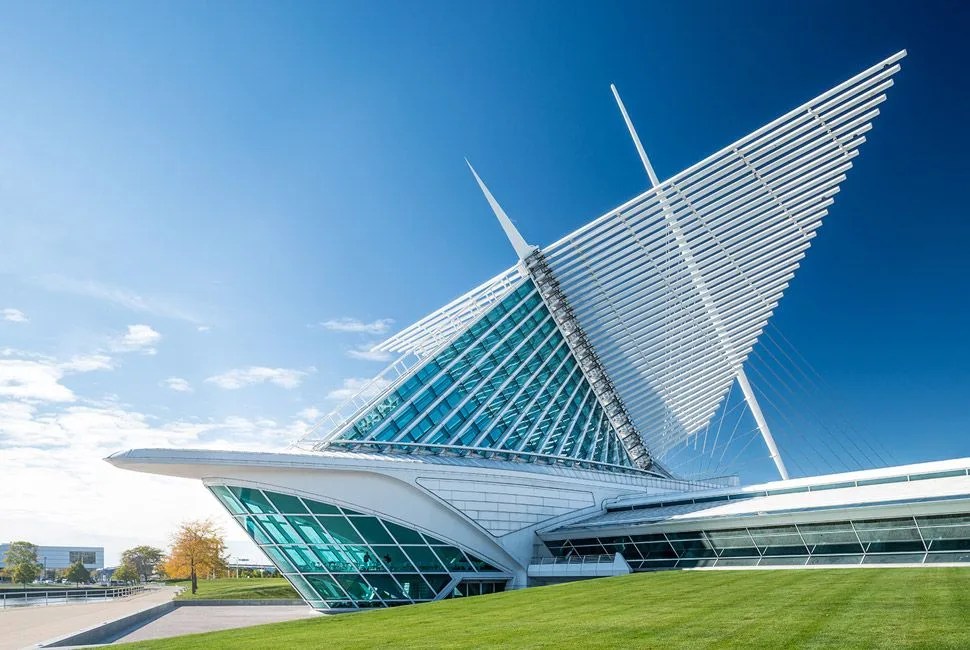Ed. Note: Several segments of the WTC Transportation Hub opened Thursday, March 3. The New York Times, in their review, wrote “At first blush, Mr. Calatrava’s architecture can almost — almost — make you forget what an epic boondoggle the whole thing has been. That virgin view, standing inside the Oculus and gazing up, is a jaw-dropper.” Below is the story of how Calatrava’s project came to be.
In January 2004, Santiago Calatrava, the world-renowned Spanish architect, unveiled plans for the World Trade Center Transportation Hub. The hub would replace the makeshift station constructed in 2003 after the original was destroyed on September 11, 2001. Calatrava’s station would serve as a terminal for PATH trains from Hoboken and Newark, connect commuters to the New York City subway line via passageways and deliver tourists to a luxury shopping center.
The presentation for Calatrava’s grand design matched his typical style. His emphasis was on the visceral rather than the strictly functional; the unveiling featured a chalk drawing of a young girl releasing a bird from her hands, representing the inspiration of the proposed Oculus, the ambitious above-ground section of the hub, formed by glass and steel that in his sketches moved quickly upwards before spreading out like wings at the intersection of Church Street and Vesey Street.
The plan was ambitious. Overly so. But in the time after 9/11 the federal government allocated $4.55 billion for Lower Manhattan transportation projects, unburdening politicians of financial concerns and allowing the approval of a dramatic permanent fixture at the redeveloping site of the World Trade Center without much debate. And Calatrava seemed predestined for the job. Then 52, he was at the top of his game. Joseph Seymour, at the time the executive director of the Port Authority, to which the hub belonged, called him a modern-day Da Vinci; the very next year, in 2005, the Met opened an exhibit featuring Calatrava’s sculpture and architectural models, the largest ever devoted to a living architect. And the Port Authority itself was made up of workers directly affected by the attacks; 84 of their colleagues perished when the Twin Towers, also a construction project of the Port Authority, collapsed. They saw investing in Calatrava as synonymous with investing in a design worthy of the hallowed location.
3 photos
Other notable Calatrava works: The Liège-Guillemins railway station in Belgium; the Turning Torso skyscraper in Malmo, Sweden; and the Milwaukee Art Museum.
The original plan cost $2.21 billion and broke ground on September 12, 2005, the day after a ceremony commemorating the anniversary of 9/11. At the kickoff ceremony, the architect and his daughter released into the sky what were officially said to be a pair of doves, but were actually homing pigeons — a minor deception for the sake of appearances, an example of the type of pragmatic decisions critics hesitate to associate with his projects. Its expected opening date was 2009.



